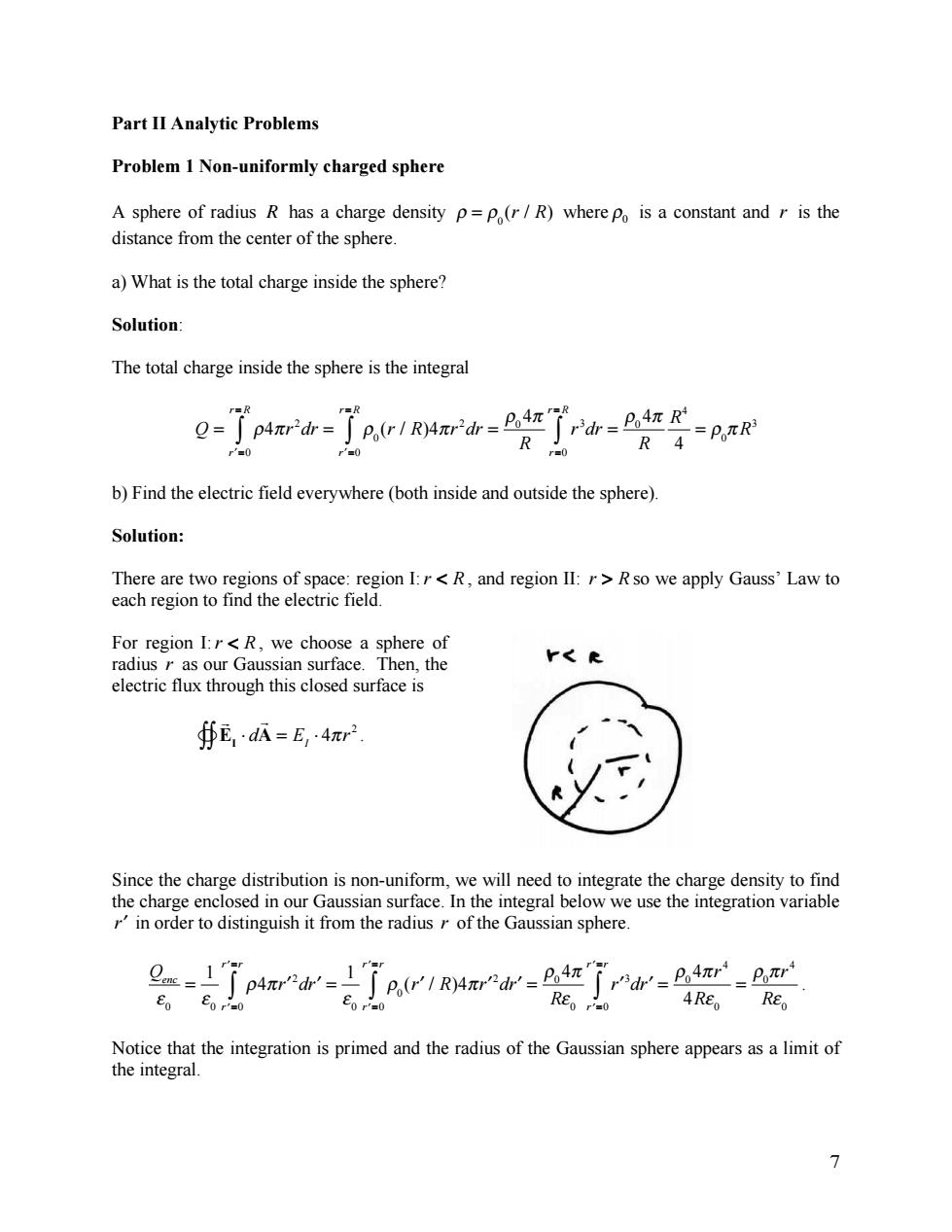正在加载图片...

Part II Analytic Problems Problem 1 Non-uniformly charged sphere A sphere of radius R has a charge density p=p(r/R)where po is a constant and r is the distance from the center of the sphere. a)What is the total charge inside the sphere? Solution: The total charge inside the sphere is the integral Q=∫p4mrt=了p,r1r4r'dh=P4r r=R r=R Jrdh=P4πR4 R R4 =PoTR r'=0 r'=0 r=0 b)Find the electric field everywhere (both inside and outside the sphere). Solution: There are two regions of space:region I:r<R,and region II:r>R so we apply Gauss'Law to each region to find the electric field. For region I:r<R,we choose a sphere of radius r as our Gaussian surface.Then,the F<E electric flux through this closed surface is ∯E,·aA=E,4πr2 Since the charge distribution is non-uniform,we will need to integrate the charge density to find the charge enclosed in our Gaussian surface.In the integral below we use the integration variable r'in order to distinguish it from the radius r of the Gaussian sphere. g=了p4ard=E了,1R4rw=了ra=- r'er Eo e0r'=0 4RE0 REo Notice that the integration is primed and the radius of the Gaussian sphere appears as a limit of the integral. 77 Part II Analytic Problems Problem 1 Non-uniformly charged sphere A sphere of radius R has a charge density ! = !0 (r / R) where !0 is a constant and r is the distance from the center of the sphere. a) What is the total charge inside the sphere? Solution: The total charge inside the sphere is the integral Q = !4"r 2 r#=0 r = R $ dr = !0 (r / R)4"r 2 r#=0 r = R $ dr = !0 4" R r 3 r =0 r = R $ dr = !0 4" R R4 4 = !0 " R3 b) Find the electric field everywhere (both inside and outside the sphere). Solution: There are two regions of space: region I:r < R , and region II: r > R so we apply Gauss’ Law to each region to find the electric field. For region I:r < R , we choose a sphere of radius r as our Gaussian surface. Then, the electric flux through this closed surface is ! EI ! d ! """ A = EI ! 4#r 2 . Since the charge distribution is non-uniform, we will need to integrate the charge density to find the charge enclosed in our Gaussian surface. In the integral below we use the integration variable r! in order to distinguish it from the radius r of the Gaussian sphere. Qenc ! 0 = 1 ! 0 "4#r$ 2 r$=0 r$=r % dr$ = 1 ! 0 "0 (r$ / R)4#r$ 2 r$=0 r$=r % dr$ = "0 4# R! 0 r$ 3 r$=0 r$=r % dr$ = "0 4#r 4 4R! 0 = "0 #r 4 R! 0 . Notice that the integration is primed and the radius of the Gaussian sphere appears as a limit of the integral